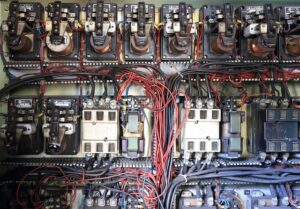Loose connections in electrical systems can be problematic and potentially hazardous. It is important to understand why loose connections get hot in order to prevent electrical failures, fires, and equipment damage.
Loose connections get hot due to increased resistance, which leads to heat generation as current flows through the connection.
In this article, we will explore the reasons behind loose connections getting hot and the implications of this issue.
Basics of Electrical Connections
Secure electrical connections are crucial for reliable and safe operation. There are different types of electrical connections, including wire-to-wire, wire-to-terminal, and wire-to-device connections.
The quality of a connection can be influenced by factors such as contact surface area, cleanliness, and tightness.
Why Do Loose Connections Occur?
Loose connections can arise from various mechanical and electrical factors. Insufficient tightening during installation, vibrations, and movement can lead to connections becoming loose over time.
Corrosion and oxidation of the conductive materials can also weaken the connection and cause it to become loose.
From an electrical perspective, loose connections have higher resistance compared to secure connections.
As current flows through a loose connection, it encounters increased resistance, which leads to heat generation. Understanding this heat generation is essential in addressing loose connections effectively.
Understanding Heat Generation
The heat generated in loose connections is a result of the Joule heating effect. When current passes through a conductor with resistance, such as a loose connection, the electrical energy is converted into heat energy.
The higher the resistance, the more heat is generated. This heat can further degrade the connection, exacerbating the problem.
Consequences of Loose Connections
Loose connections can have serious consequences for electrical systems. One significant impact is voltage drop, which can result in power loss and reduced efficiency.
Additionally, loose connections can become a fire hazard, especially when combined with heat generation.
The excess heat can cause the insulation to deteriorate and potentially ignite nearby combustible materials. Loose connections also pose a risk of equipment damage and failure.
Read also my article: Voltage Mishaps: The Hidden Dangers of Plugging a 110V Device into a 220V Outlet.
Detecting Loose Connections
Detecting loose connections is crucial for preventing further issues. Visual inspection can reveal obvious signs such as loose or corroded terminals.
Thermal imaging technology can be used to identify hotspots, indicating areas of concern. Electrical testing and measurements, including resistance checks, can provide quantitative data to assess the quality of connections.
Prevention and Maintenance
Preventing loose connections requires proper installation techniques and regular maintenance. Adhering to torque specifications during installation ensures adequate tightening.
Using appropriate tools and conducting regular checks for loose connections are essential practices. Corrosion prevention measures, such as using corrosion-resistant materials and applying protective coatings, can also help maintain secure connections.
Importance of Professional Help
In complex electrical systems, it is crucial to seek assistance from qualified electricians. They have the expertise to identify and address loose connections effectively.
Safety considerations should always be a priority when working with electrical systems, and professionals can ensure that proper protocols are followed.
Regular electrical inspections by professionals provide an opportunity to detect and rectify loose connections before they lead to serious consequences.
Conclusion
Understanding why loose connections get hot is vital for maintaining electrical safety. Mechanical and electrical factors contribute to the occurrence of loose connections, which can result in power loss, fire hazards, and equipment damage.
By focusing on prevention, regular maintenance, and professional assistance, the risks associated with loose connections can be minimized, ensuring the reliability and safety of electrical systems.
